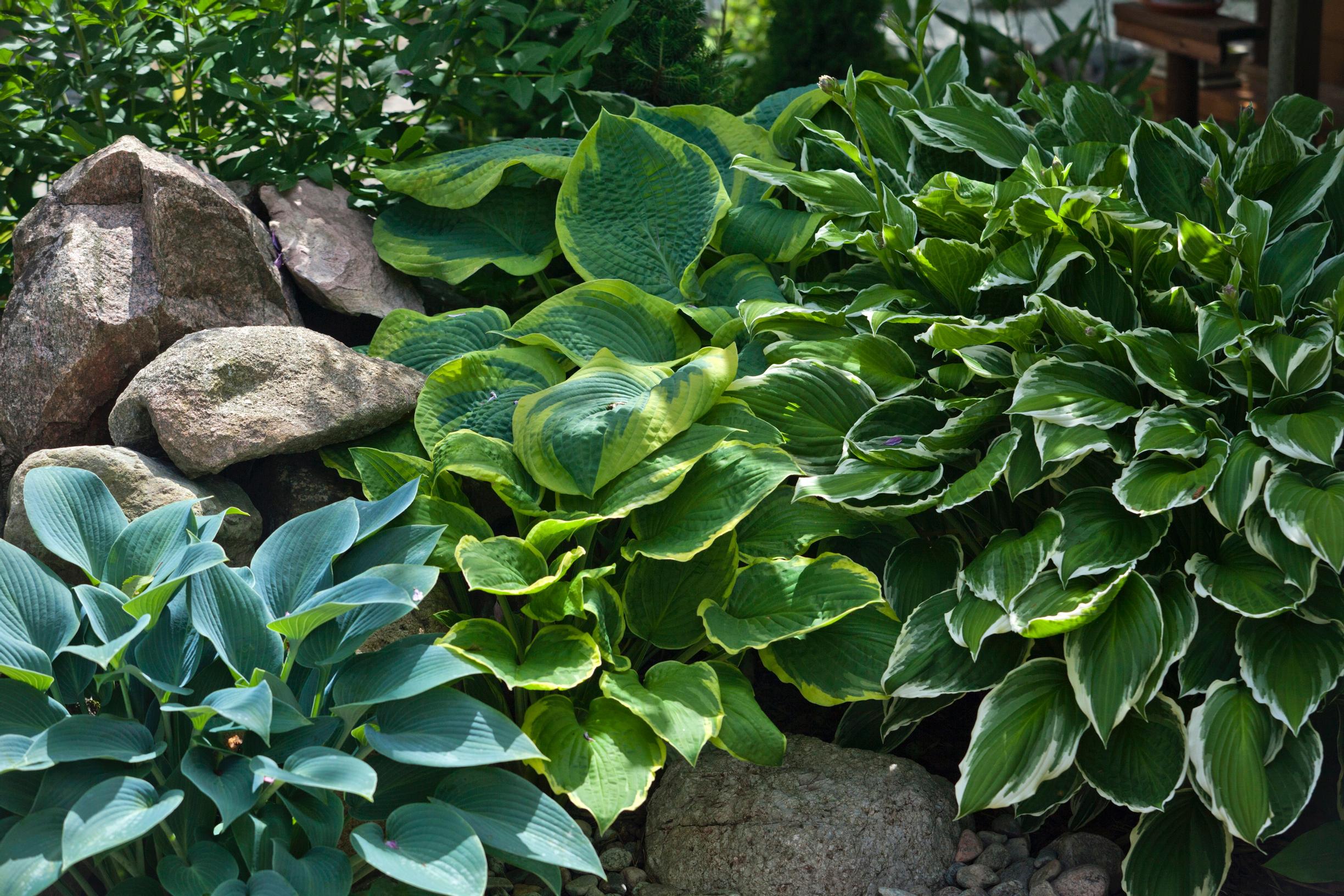
Hosta brings color and lushness to your garden—read our tips for growing and caring for it
Hostas are easy-care perennials with striking foliage that thrive in shade or partial shade. They make an impact in both flowerbeds and pots. Read on to discover tips for growing them!
Hostas are among the most popular and striking perennials grown in Finland, known for their beautiful leaves in various shapes and colors, as well as their dense, clump-forming growth habit. The trumpet-shaped flowers that bloom in late summer are also ornamental.
Most hostas originate from Japan, where they have been used as garden plants for hundreds of years. They naturally grow at the edges of moist forests, in mountainous areas, and along riverbanks. Some species are also native to China and Korea.


How to grow hosta:
Choose the right soil and growing medium for your hosta
Hostas are easy to care for and hardy when planted in the right growing conditions. They thrive best in nutrient-rich, humus-rich, slightly acidic clay soil. The most important factor for success is that the soil is moist or fresh but still well-draining.
Growing location for hosta
Hostas are great border plants for perennial groupings and they are suited well for groupings in general. Other good growing environments include areas around water features [in Finnish] and adjacent to rhododendrons.
Hostas also thrive and make an impression in pots. Charming miniature varieties are especially suitable for container plantings in small yards or balconies. Try out assembling a collection of hostas in various colors and appearances on your stairs. The exotic-looking arrangement will impress well into autumn.
Choose the planting site for your hostas based on the color of their foliage and the moisture level of the soil. Solid green and blue-leaved hostas thrive in shady or partially shaded places. Varieties that are largely white or yellow variegated or completely yellow-leaved require more light and do well in partial shade.
Hostas can thrive in sunny locations, but in that case, the soil must be deep and moisture-retentive. However, avoid planting hostas in scorching sun. In excessively dry and hot conditions, their foliage may develop brown sunburn damage.
The stiff leaves of hostas easily collect debris, so they shouldn’t be planted under trees that drop a lot of leaves or petals.


Planting hosta
Water the hosta seedlings well before planting them. Dig a 30 cm deep planting hole for small species; large varieties require about a 50 cm hole.
Plant hostas 30–40 cm apart and ensure regular watering, especially in the first summer after planting, until the plants have rooted.
Hostas start their growth quite late in the spring. Therefore, during planting, it’s good to cover their planting site to prevent weeds. Plant spring-flowering bulbs or shade-loving ground cover plants, such as European wild ginger or spotted dead-nettle around and between the hostas. You can also mulch the soil with a 3–5 cm layer of wood chips from deciduous trees, or resort to weeding until the plants start to grow.
Fertilizing hosta
Fertilize your hostas with compost soil annually, either in spring or in autumn when the leaves have withered.
Leave the leaves of hostas and other plants to decompose on site over the winter—this way your plants can utilize the nutrients released from them.
Watering hosta
If hostas are growing in a sunny location, their growing site must be moist, or alternatively, the plants must be watered abundantly and regularly. The growing medium should not be allowed to dry out for extended periods. Always give your hostas plenty of water at once so that it reaches deep into the root system.
Propagating hosta


Propagate and renew hostas by dividing them in spring or early autumn. The robust-rooted perennial can withstand division even in mid-summer, as long as you’re willing to cut off the transpiring leaves and root the divisions in a shady place. Seed propagation is also possible but requires some expertise and patience. Hostas also spread moderately on their own.
Hosta pests
Hostas are a delicacy for slugs, so monitor the plants regularly, especially during wet summers, and remove any mollusks.
Did you know that hosta is edible? Young, mild-tasting shoots are delicious when prepared like asparagus. Read our article and get tips on using hosta! [in Finnish]
Different hostas—species and varieties
Blue giant hosta (Hosta sieboldiana ‘Elegans’)


Blue giant hosta (Hosta sieboldiana ‘Elegans’) is a vigorous and striking variety, recognizable by its beautiful blue-gray, large round leaves. The plant is stunning both in group plantings and on its own. Blue giant hosta should be planted in partial shade or shade, in fresh soil. The darker the location where it grows, the darker the foliage color becomes. White flowers.
Height: 60–90 cm
Blooming time: July–August
Hardiness: hardy
Hosta ‘Great Expectations’


Hosta ‘Great Expectations’ is a particularly charming variety. Its very large yellow leaves have a blue-green edge, and the plant itself is quite tall. Plant it in a bright or partially shaded spot, in moist soil. This colorful-leaved variety is a great splash of color in perennial groups, but also striking on its own or beside a water feature. White flowers.
Height: 50–60 cm
Blooming time: July–August
Hardiness: fairly hardy
Hosta ‘Undulata’


Hosta ‘Undulata’ (Hosta undulata) varieties are variegated-leaved. The leaf colors of different varieties can be white or yellow variegated and striped. Hosta ‘Undulata’ are relatively small and slow-growing, and the leaves are narrower than those of, for example, blue giant hosta. Plant your Hosta ‘Undulata’ in a partially shaded or bright spot, in moist soil. Purple flowers.
Height: 30–60 cm
Blooming time: July–August
Hardiness: hardy


